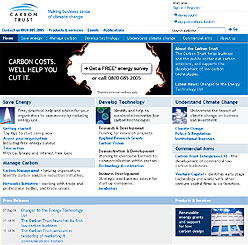The TUC has this month launched its GreenWorkplaces project to raise awareness and build union capacity to tackle climate change and energy issues at work. The new project aims to encourage employers and employees to work together to reduce energy use, waste and harmful greenhouse gas emissions.
UK workplaces generate over 66 million tonnes of carbon emissions each year from the energy and resources they consume, yet businesses waste 30 per cent of the energy they buy, on average. For many organisations, a 20 per cent cut in energy costs is easily and cheaply achievable, and would be the same as a 5 per cent increase in sales .
A TUC guide published today sets out ten simple steps employees can take to help 'greening the workplace', which include switching off lights, computers and other machinery during breaks and after work, green travel plans and reducing wastage of water, paper and other materials.
The TUC guide also gives examples where individuals have got together with workmates, trade unions and employers to make changes with a bigger impact across the whole workplace.
TUC General Secretary Brendan Barber,said:
'More and more people are recycling and reducing energy use and waste at home. But for many people work is still a green-free zone, despite being the biggest polluter and power user in the UK.
'There are simple steps people can take to make their workplace greener but to make a real difference it's better to get everybody on board. It may seem daunting at first but if employers, employees and unions get together problems can be solved and good practice can be spread across the whole organisation.'
Ten simple steps to 'greening the workplace':
- 1. Switch off all computer equipment, appliances, motors and machinery when not in use.
Remember that screen savers are not a method of saving power; they are designed to make sure that repeated images don't burn themselves permanently into the screen and, as such, actually keep the computer active.The most effective screen saver, if you are going to be away from your desk for any more than about 15 minutes, is the monitor's off switch.
- 2. Take the stairs not the lift.
- 3. If your workplace is too hot, turn the heating down instead of opening a window. Work with union reps to address over-heating caused by equipment or poor ventilation.
- 4. If it is too cold in winter, ensure radiators and heaters aren't obstructed and ask your employer to install better insulation or even combined heat and power.
- 5. Check if lighting is on unnecessarily in the middle of the day - 80% of the UK's lighting energy is used at work.
- 6. If you are the last to leave, make sure you turn everything off behind you, including machinery, printers, drinks machines, fans, lights, etc.
- 7. Set up a green travel plan. Some employers offer incentives for lower energy ways of traveling, e.g. cycling, public transport, car-sharing and walking.
- 8. Apply the three 'Rs': recycling is great, but reducing waste and re-using is even better. Print on both sides of paper, re-use envelopes, and think about ways of reducing other waste that is generated in your workplace.
- 9. Reduce water use at work through publicity and simple adjustments to taps and toilets.
- 10. Work together for a greener workplace - talk to your workmates and your union about working out solutions with your employer.
Despite a commonly held belief that switching equipment on and off can shorten its life, most experts argue that the life span of electrical equipment is determined largely by how long it is switched on.

Interestingly, a recent Carbon Trust employee survey found that three quarters of respondents want to work for a business that is taking steps to reduce its carbon emissions.
A further 85% of workers said they would be willing to cut their own energy use at work in order to help tackle climate change.
The Carbon Trust offers an energy walk-round checklist that employers can use while walking round their business to identify where energy savings can be made.